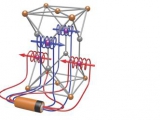In a paper published in Science on 22 September 2017, the Pierre Auger Collaboration reports observational evidence demonstrating that cosmic rays with energies a million times greater than that of the protons accelerated in the Large Hadron Collider come from much further away than from our own Galaxy. Ever...














